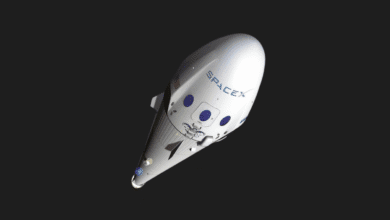Understanding How Artificial Intelligence Works

Artificial Intelligence (AI) has revolutionized our world, impacting various sectors including healthcare, finance, and entertainment.
But the question remains – how does AI function? In this article, our goal is to simplify the intricate mechanisms of AI into comprehensible information.
What is Artificial Intelligence?

Artificial Intelligence is a branch of computer science that aims to create systems capable of performing tasks that would ordinarily require human intelligence. These tasks include learning from experience (learning), recognizing objects or speech (perception), understanding and responding to language (natural language processing), and making informed decisions (problem-solving).
The Mechanics of AI

AI operates using algorithms and statistical models to perform specific tasks without explicit instructions, relying instead on patterns and inference. It’s an umbrella term that includes several subfields:
- Machine Learning (ML): Machine Learning, a key aspect of AI, allows systems to learn and improve from experience automatically. It uses statistical techniques to enable machines to improve at tasks with experience.
- Deep Learning (DL): This is a subfield of ML based on artificial neural networks with representation learning. It imitates the working of the human brain in processing data for use in decision making.
- Natural Language Processing (NLP): NLP is an AI subset that focuses on the interaction between computers and humans through language. It enables systems to understand, interpret, and generate human language.
How AI Learns – Supervised, Unsupervised, and Reinforcement Learning

Machine Learning, a significant part of AI, happens in three main ways:
- Supervised Learning: In this type of learning, an AI model is trained on labeled data. It’s called “supervised” learning because the process of an algorithm learning from the training dataset can be thought of as a teacher supervising the learning process.
- Unsupervised Learning: Here, the model is provided with unlabeled data and must find patterns and relationships within the data itself. This method is used for clustering, dimensionality reduction, and association rule learning tasks.
- Reinforcement Learning: This is a type of dynamic learning where an agent learns to behave in an environment, by performing actions and observing the results. It’s driven by rewards, with the AI system navigating an environment to maximize the cumulative reward.
Challenges and Future of AI

While AI has numerous benefits, it also brings challenges, including the need for large amounts of data, concerns about privacy, and fears about job displacement. Addressing these issues is a key aspect of future AI development.
AI continues to evolve at a rapid pace, promising exciting prospects for the future. Quantum computing and edge AI are some trends that could shape the next wave of AI.
In conclusion, AI operates by mimicking human intelligence through a combination of algorithms, machine learning, and data. It’s a powerful tool, but one that requires careful management and thoughtful implementation.
You may also like this content
- Meta Building World’s Fastest AI Supercomputer for Metaverse
- Artificial Intelligence Will Make Decisions Instead Of People
- SingularityNET & Mandala: AI Metaverse
Follow us on TWITTER (X) and be instantly informed about the latest developments…











